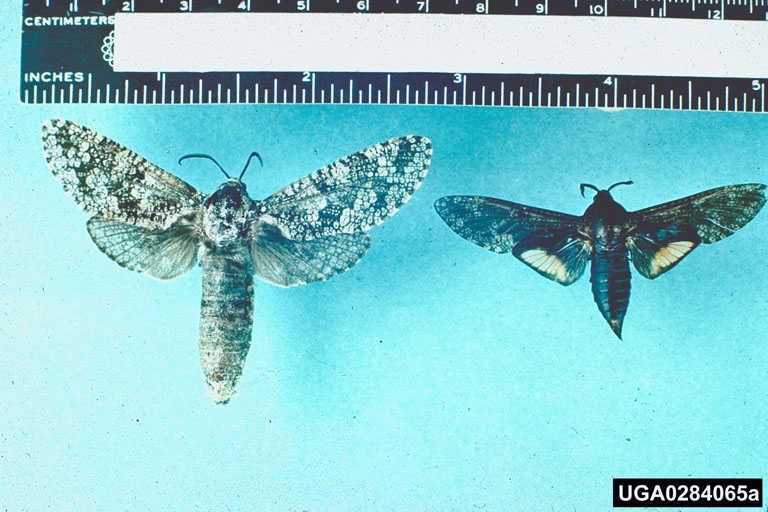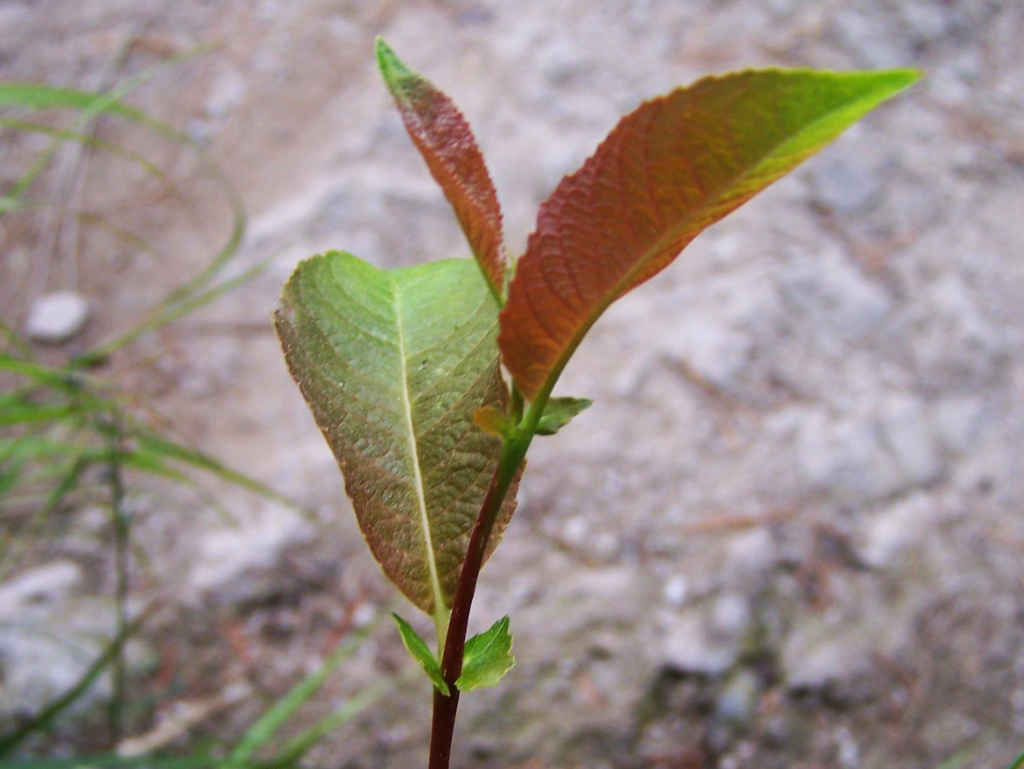|
Prionoxystus Robiniae
''Prionoxystus robiniae'', the carpenterworm moth or locust borer, is a moth of the family Cossidae. It was first described by Peck in 1818 and it is found in southern Canada Canada is a country in North America. Its ten provinces and three territories extend from the Atlantic Ocean to the Pacific Ocean and northward into the Arctic Ocean, covering over , making it the world's second-largest country by tota ... and most of the United States. The wingspan is 43–85 mm. Adults are on wing from May to July depending on the location. The larvae feed on Robinia, locust, oak, chestnut, Populus, poplar, willow, maple and Fraxinus, ash. The species is considered a pest, because the tunnels the larvae create decrease the value of hardwood lumber. References External links * Cossinae {{Cossinae-stub ... [...More Info...] [...Related Items...] OR: [Wikipedia] [Google] [Baidu] |
Animal
Animals are multicellular, eukaryotic organisms in the Kingdom (biology), biological kingdom Animalia. With few exceptions, animals Heterotroph, consume organic material, Cellular respiration#Aerobic respiration, breathe oxygen, are Motility, able to move, can Sexual reproduction, reproduce sexually, and go through an ontogenetic stage in which their body consists of a hollow sphere of Cell (biology), cells, the blastula, during Embryogenesis, embryonic development. Over 1.5 million Extant taxon, living animal species have been Species description, described—of which around 1 million are Insecta, insects—but it has been estimated there are over 7 million animal species in total. Animals range in length from to . They have Ecology, complex interactions with each other and their environments, forming intricate food webs. The scientific study of animals is known as zoology. Most living animal species are in Bilateria, a clade whose members have a Symmetry in biology#Bilate ... [...More Info...] [...Related Items...] OR: [Wikipedia] [Google] [Baidu] |
Maple
''Acer'' () is a genus of trees and shrubs commonly known as maples. The genus is placed in the family Sapindaceae.Stevens, P. F. (2001 onwards). Angiosperm Phylogeny Website. Version 9, June 2008 nd more or less continuously updated since http://www.mobot.org/MOBOT/research/APweb/. There are approximately 132 species, most of which are native to Asia, with a number also appearing in Europe, northern Africa, and North America. Only one species, '' Acer laurinum'', extends to the Southern Hemisphere.Gibbs, D. & Chen, Y. (2009The Red List of Maples Botanic Gardens Conservation International (BGCI) The type species of the genus is the sycamore maple, '' Acer pseudoplatanus'', the most common maple species in Europe.van Gelderen, C. J. & van Gelderen, D. M. (1999). ''Maples for Gardens: A Color Encyclopedia'' Maples usually have easily recognizable palmate leaves ('' Acer negundo'' is an exception) and distinctive winged fruits. The closest relatives of the maples are the hor ... [...More Info...] [...Related Items...] OR: [Wikipedia] [Google] [Baidu] |
Willow
Willows, also called sallows and osiers, from the genus ''Salix'', comprise around 400 speciesMabberley, D.J. 1997. The Plant Book, Cambridge University Press #2: Cambridge. of typically deciduous trees and shrubs, found primarily on moist soils in cold and temperate regions. Most species are known as willow, but some narrow-leaved shrub species are called osier, and some broader-leaved species are referred to as sallow (from Old English ''sealh'', related to the Latin word ''salix'', willow). Some willows (particularly arctic and alpine species) are low-growing or creeping shrubs; for example, the dwarf willow (''Salix herbacea'') rarely exceeds in height, though it spreads widely across the ground. Description Willows all have abundant watery bark sap, which is heavily charged with salicylic acid, soft, usually pliant, tough wood, slender branches, and large, fibrous, often stoloniferous roots. The roots are remarkable for their toughness, size, and tenacity to ... [...More Info...] [...Related Items...] OR: [Wikipedia] [Google] [Baidu] |
Populus
''Populus'' is a genus of 25–30 species of deciduous flowering plants in the family Salicaceae, native to most of the Northern Hemisphere. English names variously applied to different species include poplar (), aspen, and cottonwood. The western balsam poplar (''Populus trichocarpa, P. trichocarpa'') was the first tree to have its full DNA code determined by DNA sequencing, in 2006. Description The genus has a large genetic diversity, and can grow from tall, with trunks up to in diameter. The Bark (botany), bark on young trees is smooth, white to greenish or dark gray, and often has conspicuous lenticels; on old trees, it remains smooth in some species, but becomes rough and deeply fissured in others. The shoots are stout, with (unlike in the related willows) the terminal bud present. The leaves are spirally arranged, and vary in shape from triangular to circular or (rarely) lobed, and with a long petiole (botany), petiole; in species in the sections ''Populus'' and ''A ... [...More Info...] [...Related Items...] OR: [Wikipedia] [Google] [Baidu] |
Chestnut
The chestnuts are the deciduous trees and shrubs in the genus ''Castanea'', in the beech family Fagaceae. They are native to temperate regions of the Northern Hemisphere. The name also refers to the edible nuts they produce. The unrelated horse chestnuts (genus ''Aesculus'') are not true chestnuts, but are named for producing nuts of similar appearance that are mildly poisonous to humans. True chestnuts should also not be confused with water chestnuts, which are tubers of an aquatic herbaceous plant in the sedge family Cyperaceae. Other species commonly mistaken for chestnut trees are the chestnut oak (''Quercus prinus'') and the American beech ('' Fagus grandifolia''),Chestnut Tree in chestnuttree.net. both of which are also in the Fagaceae family. [...More Info...] [...Related Items...] OR: [Wikipedia] [Google] [Baidu] |
Robinia
''Robinia'' is a genus of flowering plants in the family Fabaceae, tribe Robinieae, native to North America. Commonly known as locusts, they are deciduous trees and shrubs growing tall. The leaves are pinnate with 7–21 oval leaflets. The flowers are white or pink, in usually pendulous racemes. Many species have thorny shoots, and several have sticky hairs on the shoots. The genus is named after the royal French gardeners Jean Robin and his son Vespasien Robin, who introduced the plant to Europe in 1601. The number of species is disputed between different authorities, with as few as four recognised by some authors, while others recognise up to 10 species. Several natural hybrids are also known. Some species of ''Robinia'' are used as food by caterpillars of Lepidoptera, including such moths as the brown-tail (''Euproctis chrysorrhoea''), the buff-tip ('' Phalera bucephala''), the engrailed ('' Ectropis crepuscularia''), the giant leopard moth (''Hypercompe scribonia''), t ... [...More Info...] [...Related Items...] OR: [Wikipedia] [Google] [Baidu] |
Wingspan
The wingspan (or just span) of a bird or an airplane is the distance from one wingtip to the other wingtip. For example, the Boeing 777–200 has a wingspan of , and a wandering albatross (''Diomedea exulans'') caught in 1965 had a wingspan of , the official record for a living bird. The term wingspan, more technically extent, is also used for other winged animals such as pterosaurs, bats, insects, etc., and other aircraft such as ornithopters. In humans, the term wingspan also refers to the arm span, which is distance between the length from one end of an individual's arms (measured at the fingertips) to the other when raised parallel to the ground at shoulder height at a 90º angle. Former professional basketball player Manute Bol stood at and owned one of the largest wingspans at . Wingspan of aircraft The wingspan of an aircraft is always measured in a straight line, from wingtip to wingtip, independently of wing shape or sweep. Implications for aircraft design an ... [...More Info...] [...Related Items...] OR: [Wikipedia] [Google] [Baidu] |
Prionoxystus Robiniae Larva
''Prionoxystus'' is a genus of moths in the family Cossidae. Species * ''Prionoxystus macmurtrei'' Guérin-Meneville, 1829 * ''Prionoxystus piger'' Grote, 1865 * ''Prionoxystus robiniae ''Prionoxystus robiniae'', the carpenterworm moth or locust borer, is a moth of the family Cossidae. It was first described by Peck in 1818 and it is found in southern Canada and most of the United States. The wingspan is 43–85 mm. Adu ...'' Peck, 1818 References Natural History Museum Lepidoptera generic names catalog Cossinae {{Cossinae-stub ... [...More Info...] [...Related Items...] OR: [Wikipedia] [Google] [Baidu] |
Canada
Canada is a country in North America. Its ten provinces and three territories extend from the Atlantic Ocean to the Pacific Ocean and northward into the Arctic Ocean, covering over , making it the world's second-largest country by total area. Its southern and western border with the United States, stretching , is the world's longest binational land border. Canada's capital is Ottawa, and its three largest metropolitan areas are Toronto, Montreal, and Vancouver. Indigenous peoples have continuously inhabited what is now Canada for thousands of years. Beginning in the 16th century, British and French expeditions explored and later settled along the Atlantic coast. As a consequence of various armed conflicts, France ceded nearly all of its colonies in North America in 1763. In 1867, with the union of three British North American colonies through Confederation, Canada was formed as a federal dominion of four provinces. This began an accretion of provinces and ... [...More Info...] [...Related Items...] OR: [Wikipedia] [Google] [Baidu] |
Arthropod
Arthropods (, (gen. ποδός)) are invertebrate animals with an exoskeleton, a Segmentation (biology), segmented body, and paired jointed appendages. Arthropods form the phylum Arthropoda. They are distinguished by their jointed limbs and Arthropod cuticle, cuticle made of chitin, often Mineralization (biology), mineralised with calcium carbonate. The arthropod body plan consists of segments, each with a pair of appendages. Arthropods are bilaterally symmetrical and their body possesses an exoskeleton, external skeleton. In order to keep growing, they must go through stages of moulting, a process by which they shed their exoskeleton to reveal a new one. Some species have wings. They are an extremely diverse group, with up to 10 million species. The haemocoel, an arthropod's internal cavity, through which its haemolymph – analogue of blood – circulates, accommodates its interior Organ (anatomy), organs; it has an open circulatory system. Like their exteriors, the internal or ... [...More Info...] [...Related Items...] OR: [Wikipedia] [Google] [Baidu] |
Species Description
A species description is a formal description of a newly discovered species, usually in the form of a scientific paper. Its purpose is to give a clear description of a new species of organism and explain how it differs from species that have been described previously or are related. In order for species to be validly described, they need to follow guidelines established over time. Zoological naming requires adherence to the ICZN code, plants, the ICN, viruses ICTV, and so on. The species description often contains photographs or other illustrations of type material along with a note on where they are deposited. The publication in which the species is described gives the new species a formal scientific name. Some 1.9 million species have been identified and described, out of some 8.7 million that may actually exist. Millions more have become extinct throughout the existence of life on Earth. Naming process A name of a new species becomes valid (available in zo ... [...More Info...] [...Related Items...] OR: [Wikipedia] [Google] [Baidu] |






